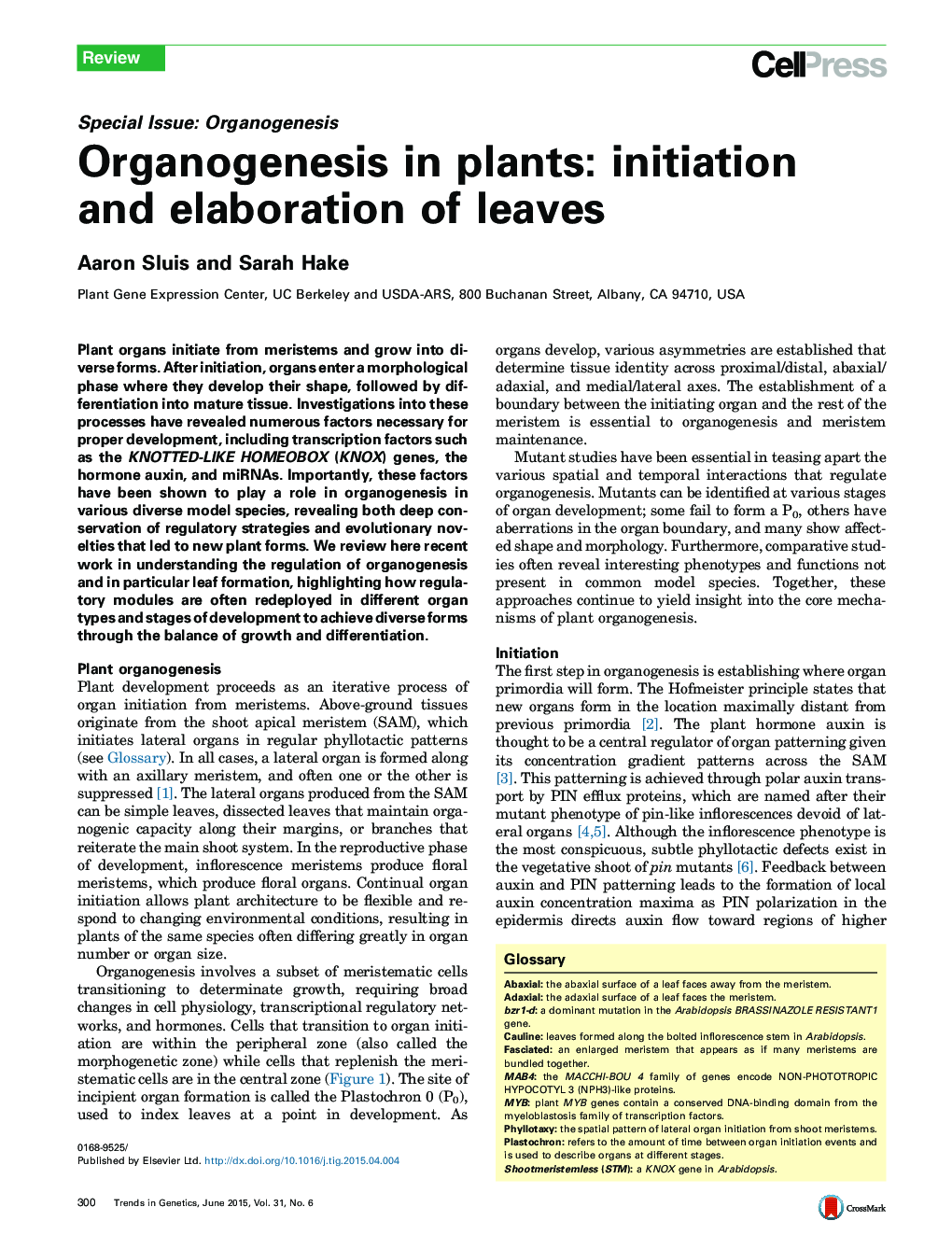| Article ID | Journal | Published Year | Pages | File Type |
|---|---|---|---|---|
| 2824726 | Trends in Genetics | 2015 | 7 Pages |
•Recent insights into organ patterning via auxin.•Redeployment of regulatory networks at multiple stages of development.•Comparative studies used for detailed understanding of regulatory mechanisms.•Discussion of developmental trade-offs that lead to various plant forms.•Organ boundaries play a crucial role in determining plant form.
Plant organs initiate from meristems and grow into diverse forms. After initiation, organs enter a morphological phase where they develop their shape, followed by differentiation into mature tissue. Investigations into these processes have revealed numerous factors necessary for proper development, including transcription factors such as the KNOTTED-LIKE HOMEOBOX (KNOX) genes, the hormone auxin, and miRNAs. Importantly, these factors have been shown to play a role in organogenesis in various diverse model species, revealing both deep conservation of regulatory strategies and evolutionary novelties that led to new plant forms. We review here recent work in understanding the regulation of organogenesis and in particular leaf formation, highlighting how regulatory modules are often redeployed in different organ types and stages of development to achieve diverse forms through the balance of growth and differentiation.
